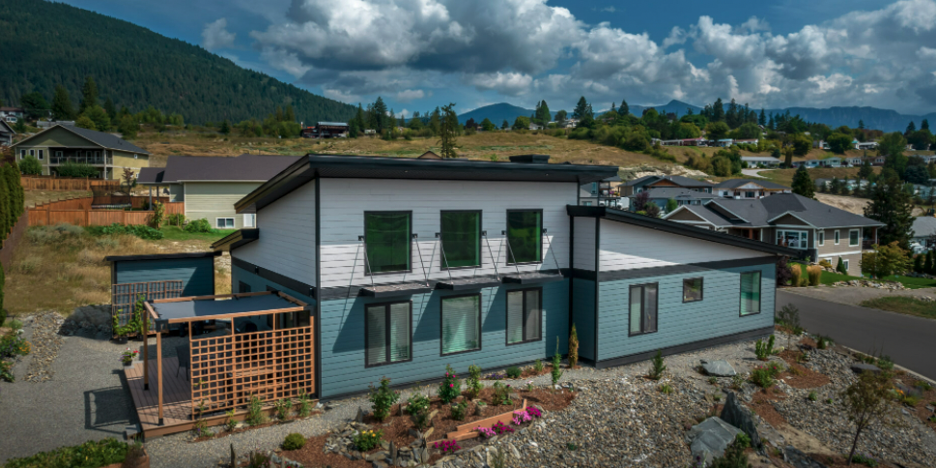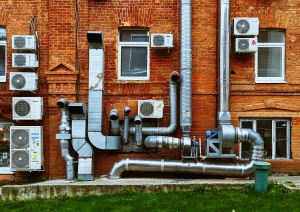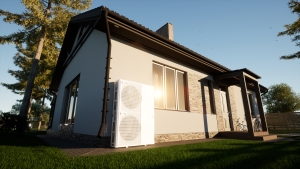These are challenging times for builders — skilled labor shortages persist, the cost of materials and fuel are too volatile for comfort and lead times can remain stubbornly long. Innovation, audacity, and resilience is what it takes to continue building successfully in such a challenging environment.
Today’s post is a success story of a determined team of contractors with a vision who defied the harsh market realities and built a net-zero-ready home with their regular crew and readily-available materials.
So, without further ado, meet Adam Koenig and the True Build Contractors team and their inspiring new project, the Conservative Contemporary Home, in Creston, BC.
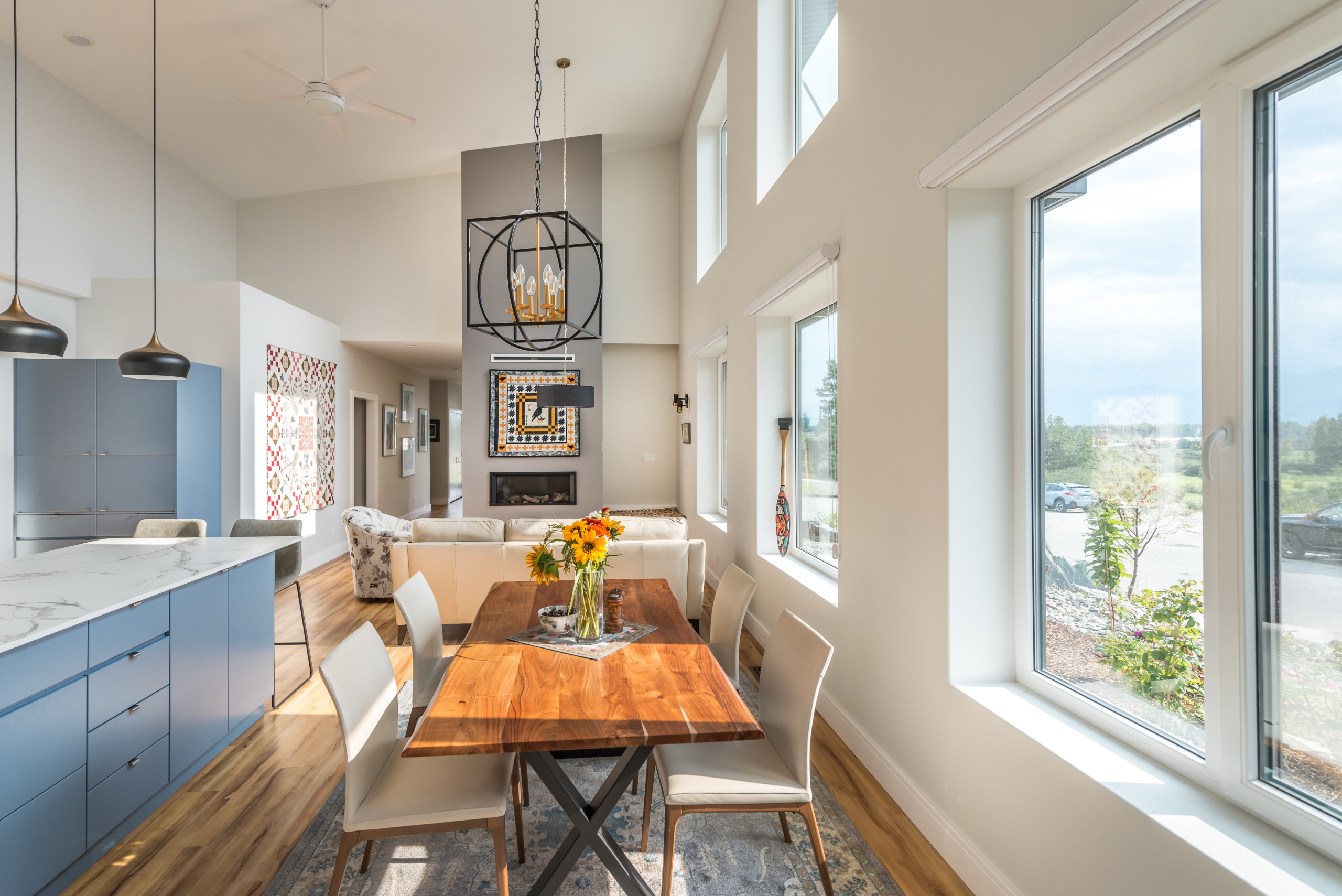
True Build’s Success Story
Adam Koenig is the co-owner of True Build Contractors, a general contractor based in Creston, BC. True Build’s mission is to build resilient, energy-efficient high-performance homes for Creston’s residents, who Adam would describe as “regular, normal” people.
With the Conservative Contemporary Home, they have achieved just that — they built an average sized single-family home that was net-zero-ready and the first in the market area to be compliant with the rigorous Step 5 of British Columbia’s Energy Code.
Best of all, True Build constructed the 2,389 ft2 high-performance home despite challenges like the ongoing shortage of general and skilled labor and volatile material costs. They even managed to put up 2,757ft2 of Logix ICF walls in only 12 days!
Adam’s goal as the co-owner of True Build Contractors is to position his company as the go-to builder of high-performance homes in and around Creston, BC.
True Build Contractors builds “normal homes for the normal people of Creston”, and they want energy efficient and durable envelopes to be an inalienable part of this “normal’‘ — a quality they hope will set their homes apart from competition.
True Build believes “You get to build the envelope once.” So, while interiors, millwork, and equipment can all be changed or upgraded as they age, the envelope must endure and continue to perform for the entirety of a home’s service life. For this reason, a durable, high-performance envelope should be the norm — not a luxury.
True Build wanted this project to be an example of a regular home in which high energy performance is the norm. In this quest for excellence, the goal was for this project to achieve Step 5 (Net-Zero Ready) on BC’s energy step code.
What Is the BC Energy Step Code?
The BC Energy Code comprises 5 steps that rank homes’ energy efficiency from lowest (Step 1) to highest (Step 5).
Here’s a brief summary of each step:
- Step 1: Complies with BC Building Code
- Step 2: 10% more efficient than a home built to minimum requirements per BC Building Code
- Step 3: 20% more efficient than BC Building Code minimum
- Step 4: 40% more efficient than BC Building Code requirements
- Step 5: Net-Zero-Ready, i.e. a home that can produce as much energy as it consumes when renewable energy generation systems are installed. This is the level Adam Koenig was aiming for with the Conservative Contemporary Home project.
The Challenge
As they set out to construct the Conservative Contemporary Home, the True Build team found themselves facing several challenges.
True Build generally aims for an air tightness rating of ACH50 0.7, which takes plenty of skill and effort to achieve — even with an experienced crew. For the Conservative Contemporary Home, they had set their sights on an air tightness rating that was even higher.
Skyrocketing lumber prices also stood in their way of establishing a reasonable budget and managing risk. The home was built in 2020, when pandemic-driven production and supply chain issues caused lumber costs to jump drastically.
Finally, the premise of building a net-zero-ready home was a challenge, as the home would have to be incredibly energy-efficient and airtight.
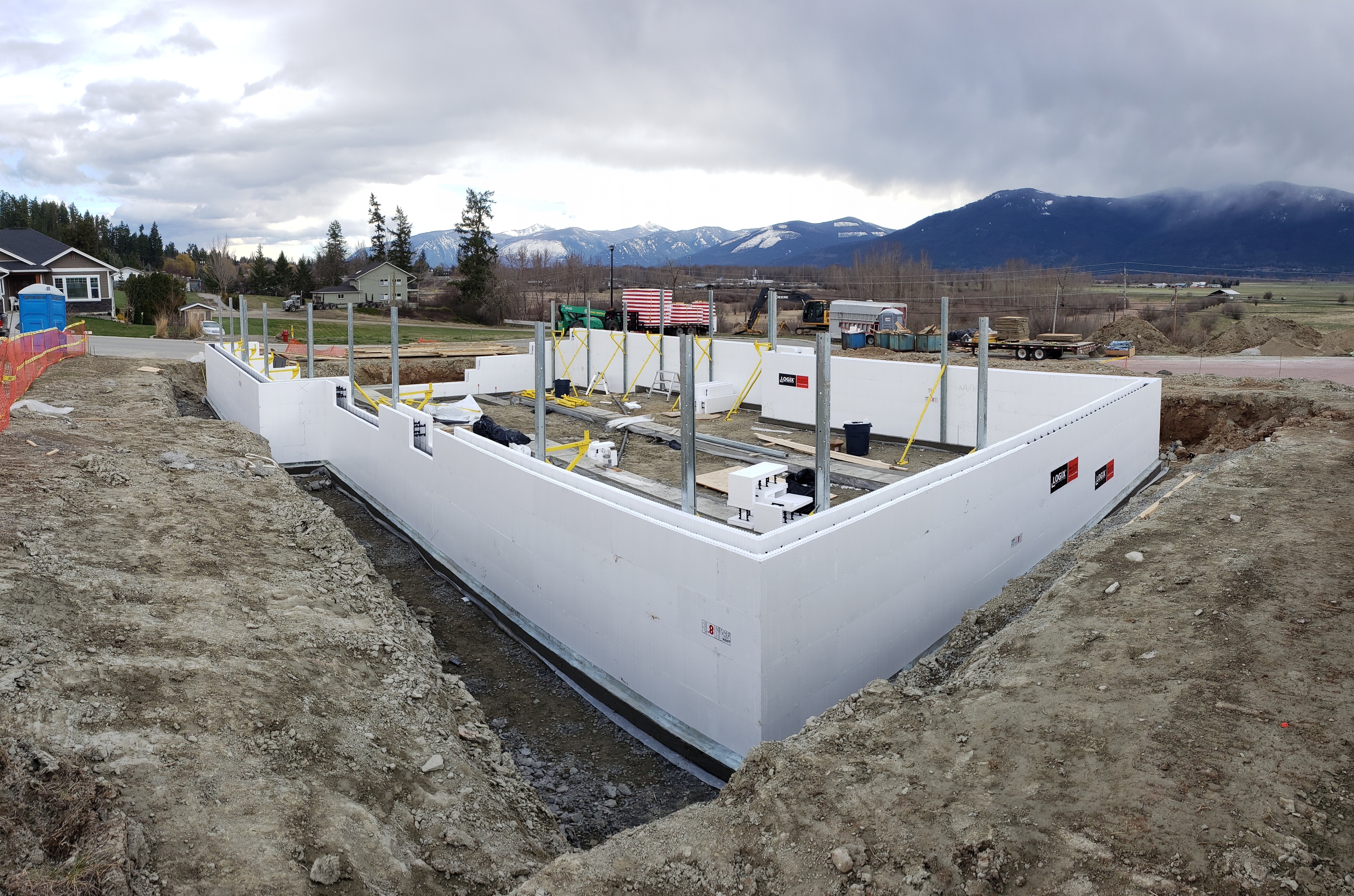
Logix ICF foundation
Why The True Build Team Chose Logix ICF Walls Below and Above-Grade
They chose Logix ICF as his solution for below- and above-grade walls because this energy-efficient and simple-to-install ICF system let them tackle many of challenges in one shot.
True Build has always used Logix ICF for home foundations. That’s because there’s way less labor and sequencing when building with ICFs below grade.
This time, however, Adam had decided to build with the blocks all the way up to the roof. Using ICFs above grade was an easy way to manage the four control layers (water, air, vapor, and thermal control).
By building with ICFs from the foundation to the roof, they were able to construct this high-performance home without burdening the crew with unnecessarily complicated installation procedures and detailing.
ICFs also helped them build stability into their budget, as he didn’t have to worry about the volatility of lumber prices. They also found some savings in reinforcing the concrete ICF cores with Helix micro rebar instead of standard steel reinforcement bars.
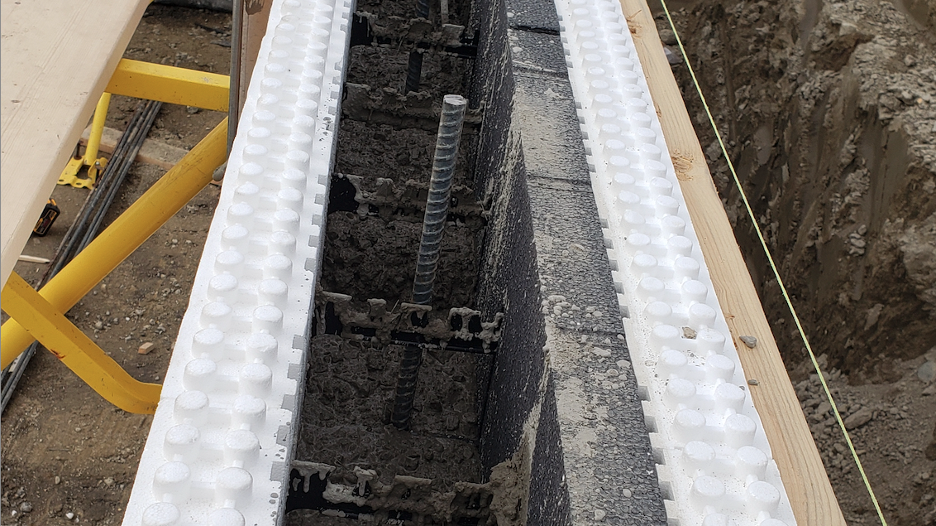
Concrete ICF cores reinforced with Helix micro rebar instead of standard steel reinforcement bars.
How the Conservative Contemporary Home Was Constructed
The Conservative Contemporary Home is a single-story house that features a blend of hip and varied single-pitch roof sections.
The 9-foot exterior walls of the home were all built with ICFs from the foundation up to the roof.
Meanwhile, 6-inch LVL studs were used to frame the vaulted section, with an ICF foundation below.

A mix of Logix ICF walls and wood framed walls were used above grade.
How True Build Achieved Step 5 of the BC Energy Code
To achieve Step 5 and make the home net-zero-ready, they utilized 8-inch Logix blocks with 2-inch inserts of Chrome GPS at the 9-foot walls. Adding the foam reduced the size (and cost) of concrete cores and gave a boost to the walls’ thermal resistance.
In the LVL-framed vaulted section, they didn’t have the advantage of Logix ICFs’ inherent airtightness and energy efficiency.
So, they matched the ICF walls’ R-Value by insulating the stud bays with R-22 Rockwool and adding 3 inches of Halo Interra on the inside of the assembly. Interra provided a layer of continuous insulation that fully removed thermal bridging — a key feature that helped the walls achieve an impressive thermal resistance of R-37.
Interra also saved time for Adam and his crew, thanks to its inherent vapor barrier that removed the need for 6 mil poly.
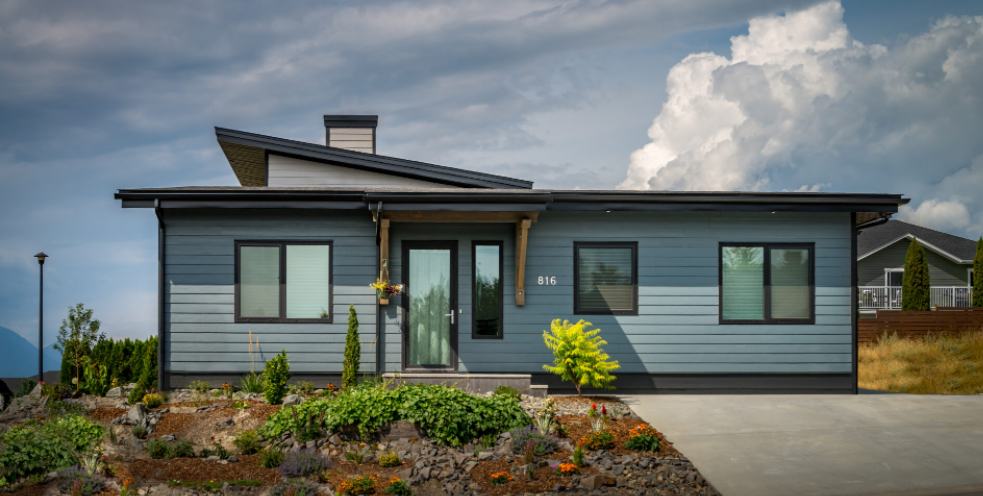
Side view of completed Conservative Contemporary Home
Wrapping It Up
The Conservative Contemporary Home boasts several impressive achievements. Crucially, it’s the first home in Creston, BC, that meets Step 5 of the province’s energy code. This means that this project is the first net-zero-ready home in Creston.
Another striking accomplishment is the fact that True Build pulled off the complex task of building a stunningly efficient home (incredibly hitting an air tightness of 0.45 ACH50!) without burdening the crew with overly sophisticated detailing. All they needed to succeed was ingenuity, hard work and high-performance materials that were relatively simple to install and eliminated construction steps.


